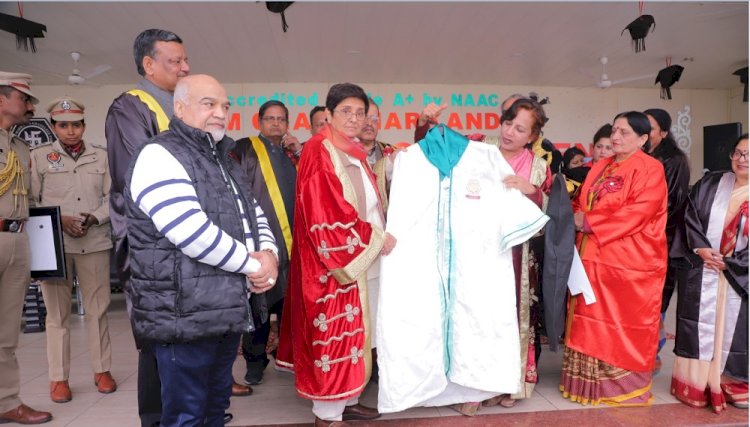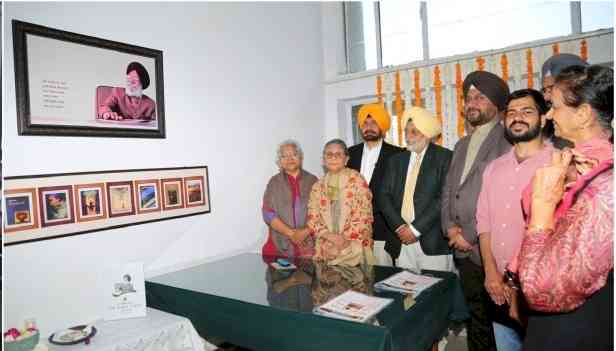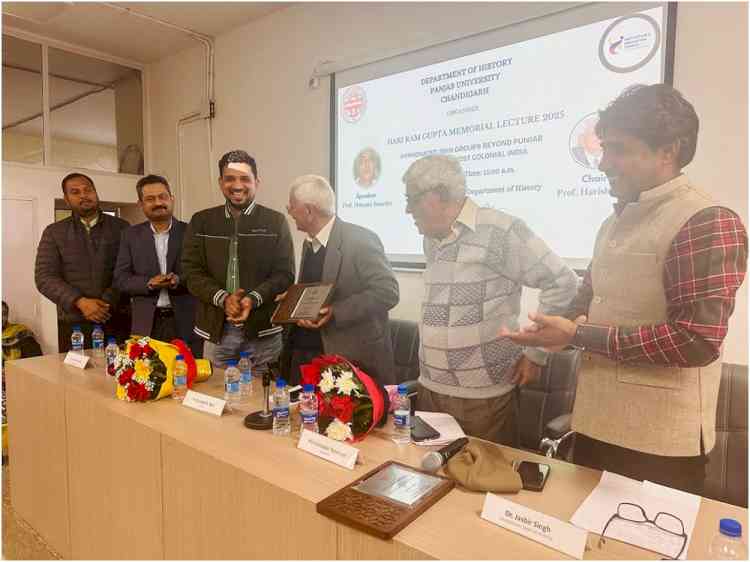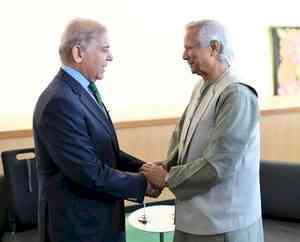Decolonizing the age-old ceremony
Lieutenant Governor of Puducherry Dr Kiran Bedi releases convocation gowns

Jalandhar: India is a seat of learning from ancient times, Takshasila and Nalanda universities are the oldest university-system of education in the world in the modern sense of university. These institutions systematically imparted knowledge and attracted a number of foreign students to study. Later stupas, temples also became centers of education; religious education was compulsory, but secular subjects were also taught. However, the ancient system of University Education got disrupted due to political circumstances and invasions. The university education is revived during the colonial period and the tradition of convocation Gowns was also introduced. However, the colonial authorities were least bothered about the cultural background, Indian ethos and the ancient system of education in India therefore they introduced European style Convocation Gowns. The biggest and most important project after independence was to decolonize India. Decolonization is the process whereby we intend the conditions we want to live and social relations we wish to have. In the process of decolonization convocation Gown which is a relic of colonial past received the attention quite late. Only recently the government started planning to do away with the western convocation attire and replace it with an Indian ethnic one, as per sources in human resource development (HRD) ministry. Most of the institutions just discarded the attire ‘Gown’ thinking it a Western outfit however Saints in India have donned this attire for thousands of years. In short Gown is associated with learning, knowledge and enlightenment since ancient times in India. However, the style and colour combination are very important in Indian Context. Keeping in mind the long association of gown and enlightenment in India Professor Kiran Arora, Principal P C M S D College, and Dr. Jai Singh from The English and Foreign Languages University worked on the project how to decolonize the Convocation Gown and came up with the style and color combination keeping in mind the thousand year old system of knowledge and enlightenment. Honorable Lieutenant Governor of Puducherry Dr. Kiran Bedi released these Convocation Gowns on 1 February 2020 in the Convocation Ceremony held at P C M S D College Jalandhar where she conferred Degrees to the students.
The convocation gown fulfils the government of India directives that it should use the Khadi material and should be an embodiment of Indian culture and spiritual tradition. The convocation gown is made up of Khadi material that stands for the entire struggle against colonial occupation of India as well as a symbol of Indianization with yellow and white colors in contrast to the Western convocation gown which is black in color. The convocation gown for the dignitaries on stage is made of white color Khadi with National emblem of India in deep blue on the Left-hand Side and the Institution Logo on the Right-hand side. The white color is the color of spiritual attainment, knowledge, enlightenment, and peace in all cultures and societies across India. The green borders represent association of Indian sages with nature as all Ashramas were locates in the lap of nature. They will also put Astagandha tilak on their forehead in the shape of full sun. Astagandha has great significance in Indian culture one or the other ingredients of Astagandha is associated with almost all cultures in India and therefore it represents fragrance of knowledge systems from all corners of India.
The students will put on mustered yellow Khadi Gown, the color yellow is associated with devotion, youthfulness, and energy, with their degrees they are accepted as Gyanveers (the soldiers of knowledge) who will fight ignorance and take the nation to next higher level. They will wear Saffron color scarfs. The saffron color stands for sacrifice, valor, and quest for enlightenment and salvation. The students will also put Astagandha tilak on their forehead in the shape of rising sun. The color of borders will be as per the recipient’s degree. For PhD degree recipients the color of borders is golden, for Postgraduation degree recipients the color of borders is maroon, for Graduation degree recipients the color of borders is saffron.
This gown will instill the feelings of nationalism in the hearts and minds of the students as it connects them to the history of education and enlightenment in India, invokes them for spiritual attainment and sacrifice for the nation. It is an embodiment of Indian ethos and meaningful education.



 Rajat Kumar
Rajat Kumar 








